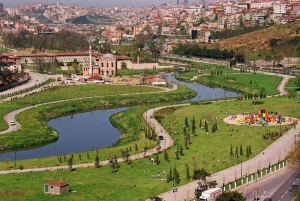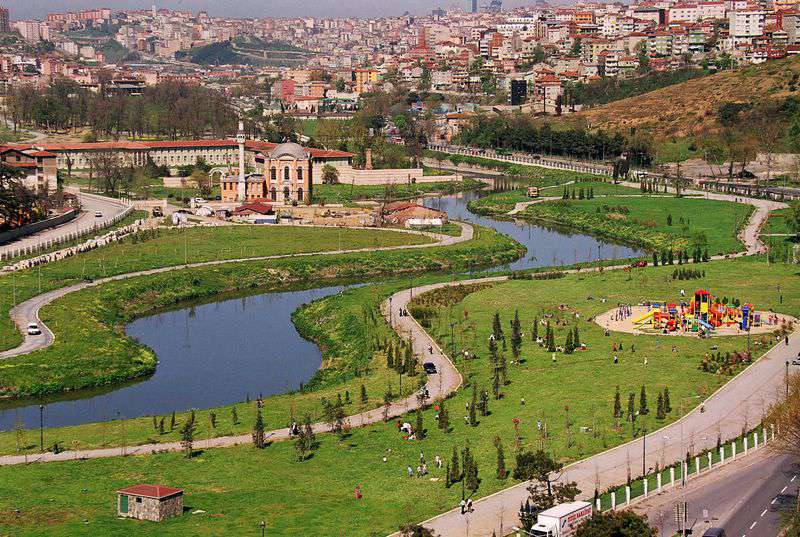Kâğıthane pronunciation: (sweet waters) is a neighbourhood at the far northern end of the Golden Horn on the European side of Istanbul, Turkey. It extends along the shores of the Alibeyköy and Kağıthane rivers that discharge into the Golden Horn. Formerly a working class district, Kağıthane is now part of a major real estate development area.
Kağıthane means ‘paper house’ in Turkish. The area was previously called Sadabad and formed part of the popular picnicking area known as the Sweet Waters of Europe.
Neighbourhoods of Kâğıthane include Seyrantepe, Ham
During the reign of Suleiman the Magnificent Kâğıthane, then Sadabad, was an extensively forested area used by the Ottoman court for hunting, riding and other equestrian pursuits. In the 17th and 18th centuries the area became increasingly fashionable especially during the Tulip Age reign of Sultan Ahmed III when many nobles had mansions and palaces built here. In particular the Sadabad Palace was built here for the statesman Yirmisekiz Mehmet Çelebi in 1722.It was destroyed in 1730 during the uprising against court excesses known as the Patrona Halil Revolt. Scant traces of the mansions, fountains etc that once graced the area can be seen in a small open-air museum in the grounds of the Kağithane Municipallity (Kağıthane Belediyesi).
During the resign of Sultan Selim III some of the mansions and palaces were rebuilt, as they were again in the mid-19th century when Krikor Balyan was employed to bring Sadabad back to life. Paintings and drawings from the late 19th and early 20th centuries still show Kağıthane as a beauty spot to which locals would flock on Fridays.

